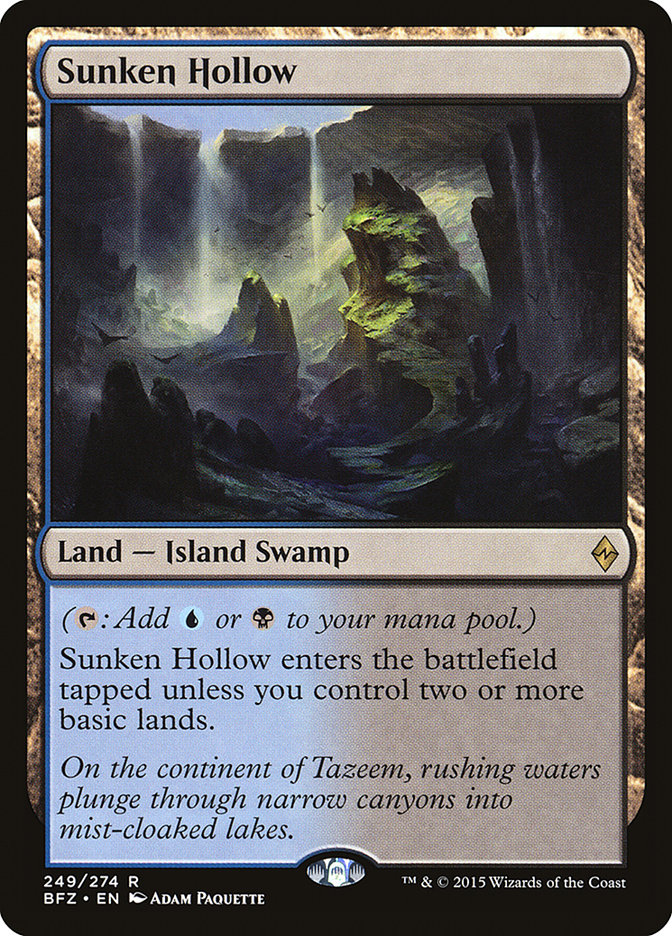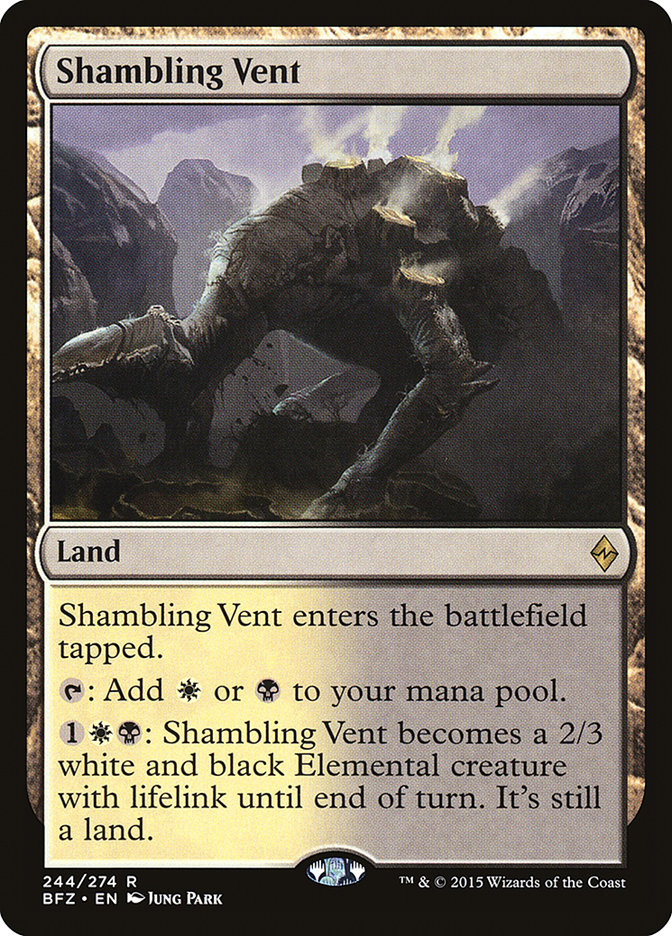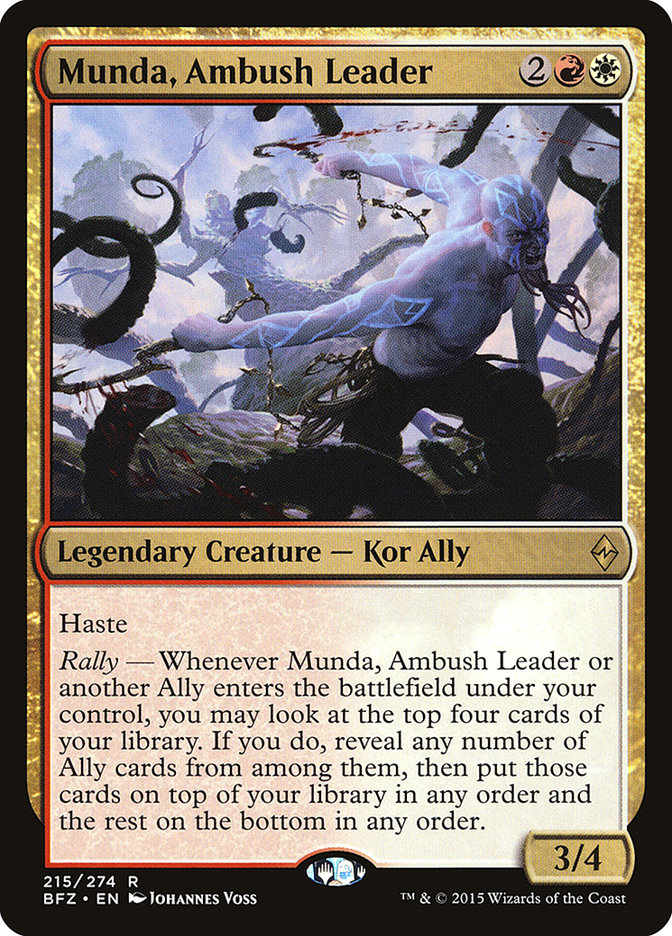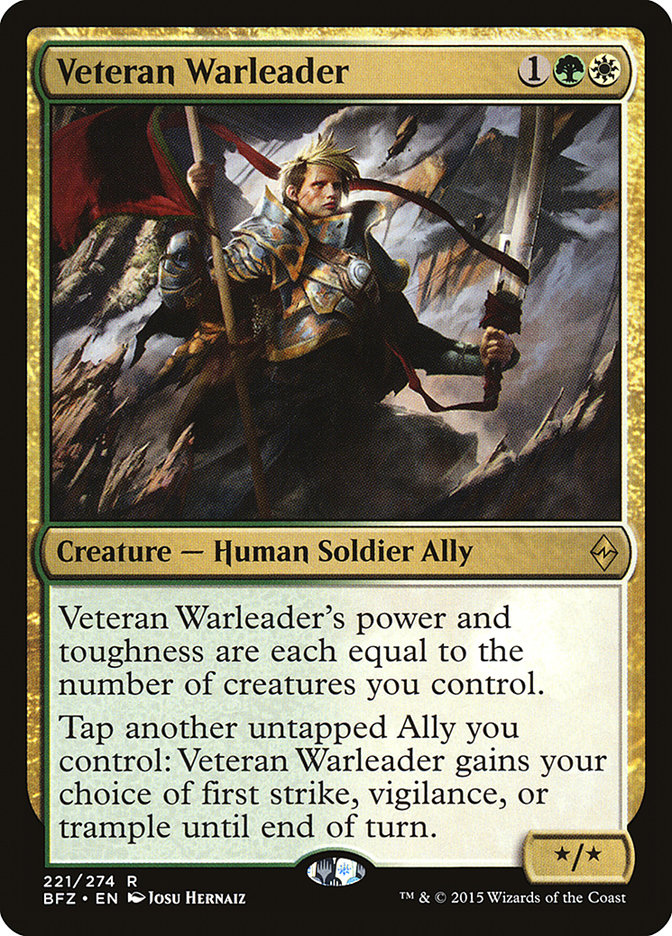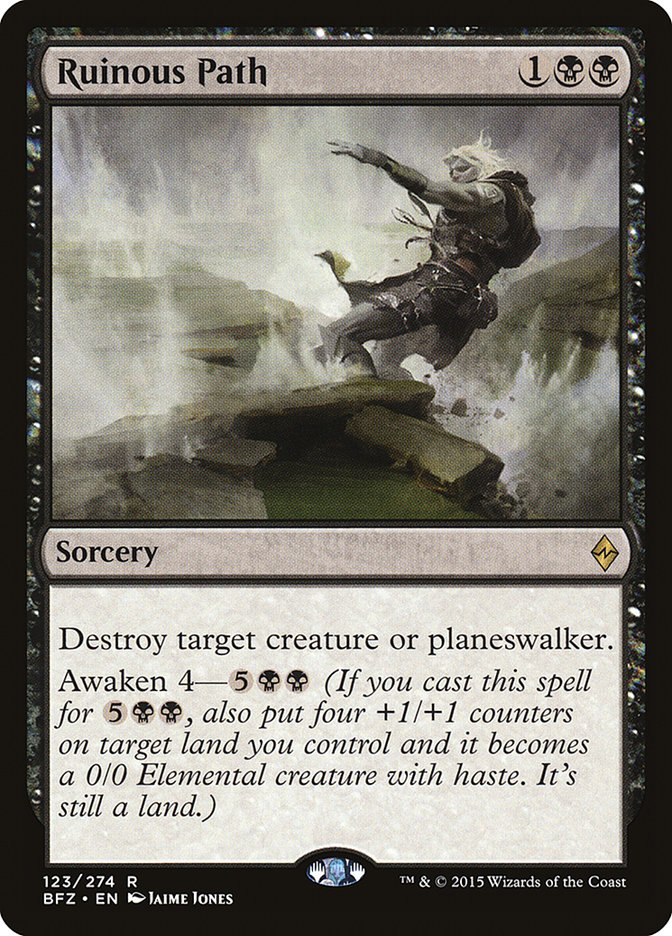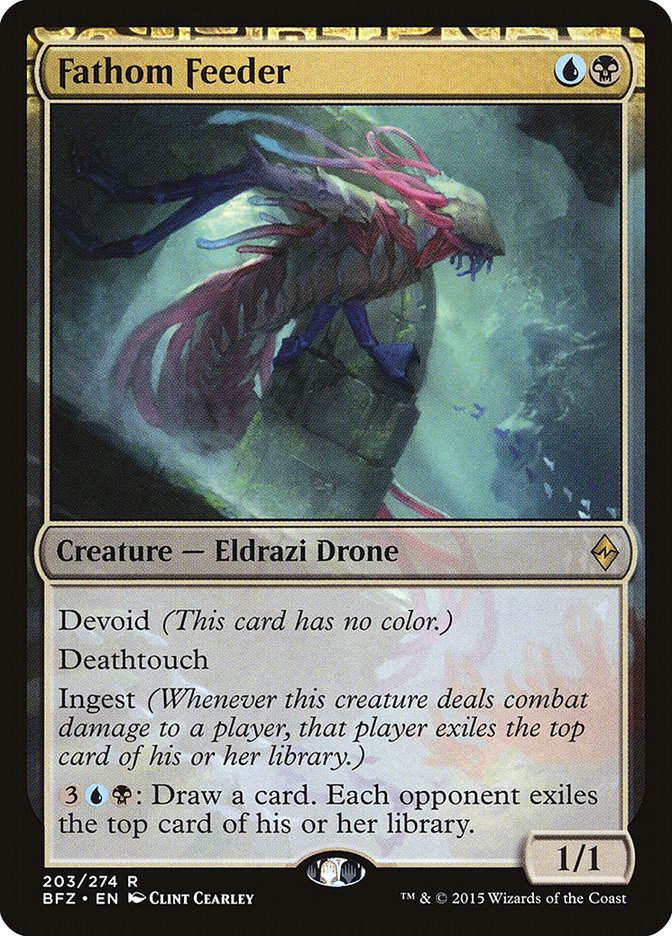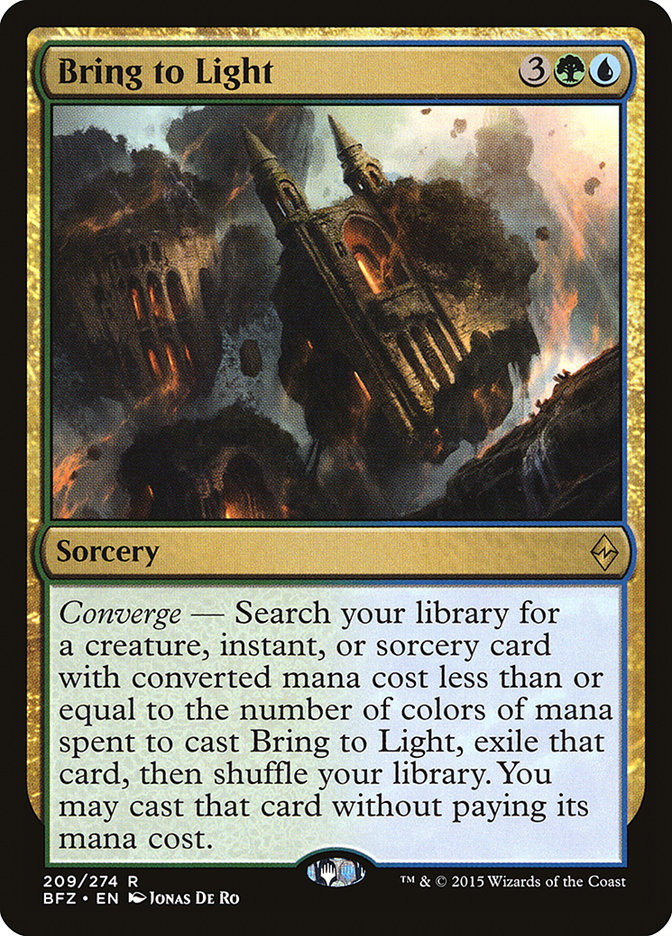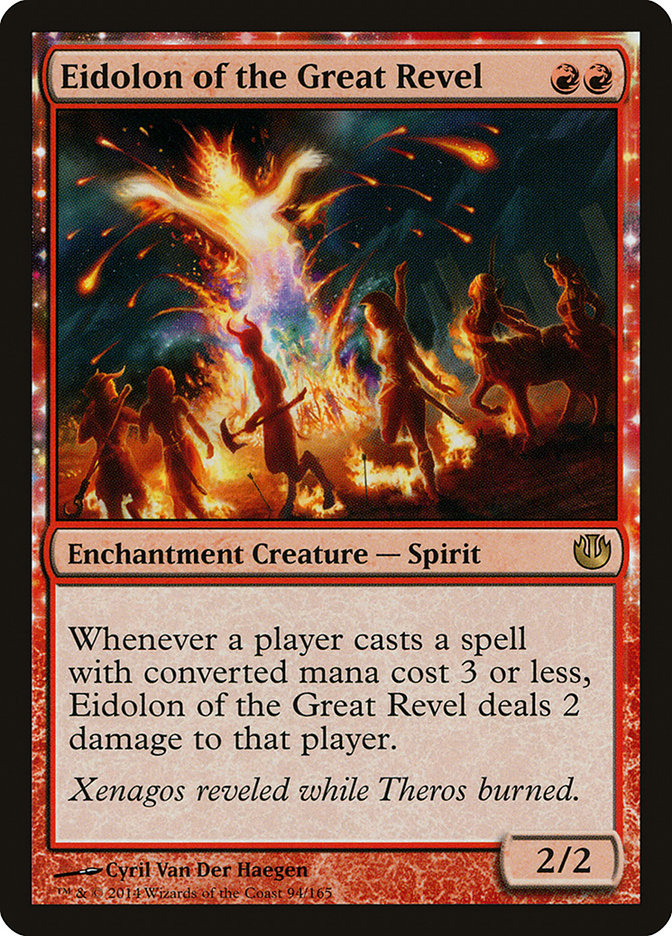[CEDitor’s Note: Hello everyone, and welcome to another edition of Fact or Fiction! In this column, two Select writers will answer five questions
provided by yours truly on Magic-related topics. At the end, you have the opportunity to vote on who won the head to head battle. This week, we have
Grand Prix Dallas/Fort Worth runner up and Roger Federer apologist Ross Merriam doing battle against Grand Prix San Diego Champion and Jace, Vryn’s
Prodigy superfan Michael Majors!]
1. With Battle lands, tri-lands, enemy creature-lands, painlands, fetchlands, and gain lands, Battle for Zendikar/Khans of Tarkir Standard will present
the most complicated manabases of all time.
Ross Merriam – Fiction: While these manabases will be incredibly complex and figuring them out is perhaps the most important problem
facing players in the early days of the format, I doubt they will be more complicated than the manabases of Lorwyn/Shards of Alara Standard in
which Gabriel Nassif won a Pro Tour with a deck containing Broodmate
Dragon, Cryptic Command, Esper Charm, and Cruel Ultimatum.
While the other decks in that format had more straightforward mana, balancing those intense color commitments is something these manabases will be unable
to do. The filterlands allowed you to cast double and triple colored cards much more easily than the current manabases will allow, even if they can also
support five-color decks.
Michael Majors – Fact: Today was my first real day of sitting down to play the new Standard format. At one point I was brainstorming a
Mardu list and there was so much to think about from just the manabase that I played multiple games without Nomad Outpost because I forgot it existed!
Last week, I was sharing a list with my Pro Tour group, and Gerry Thompson blew my mind. I had a Jeskai deck that wasn’t interested in playing any basic
Plains. He suggested that I cut my Flooded Strands for Polluted Delta because they would be able to fetch a singleton Smoldering Marsh, allowing my
fetchlands to access every color in my deck.
Maybe I’m just a simpleton, but this was not intuitive to me. Now every time I’m building a deck I’m looking for ways to play “off-color” fetchlands to
improve my manabase. This is going to be a huge portion of optimizing mana in Battle for Zendikar Standard, and the presence of the Battle lands
has made things incredibly complicated.
Another factor is the classic conundrum of having mana that is “too good.” This is especially prevalent in Modern where players will often play several
more shocklands than they should. Sure, their colors will be perfect, but they will inevitably take unnecessary additional damage. Over the course of the
tournament, these types of hiccups quickly add up. For Battle lands, the issue instead is that players will be faced with more draws where their lands
enter the battlefield tapped and as a result they cannot deploy their spells on curve.
A well-built Standard deck in two months will be able to play all of its spells. A great Standard deck in two months will be able to consistently play all
of its spells the first five turns of the game without taking six damage from painlands.
While we’ve occasionally seen formats that were difficult to tackle, (Vivid lands/Reflecting Pool in particular comes to mind), Battle for Zendikar is really pushing the envelope. Once we even figure out how to cast our spells comes the issue of whether we should branch
into creature-lands, gain lands, or even the awesome new Blighted utility lands!
2. Battle for Zendikar will make Allies a playable tribe in Modern.
Ross Merriam – Fiction: I have a rather strict definition of playable, and while I can see Allies making the occasional splash at an Open
or Premier IQ, similar to the Slivers deck in Cincinnati recently,
its gameplan is far too vulnerable and linear to remain a consistent player in Modern.
Much like Slivers, Allies relies on such a high density of creature cards in order to be powerful enough to compete against the fair decks that it cannot
possibly pack enough disruption for the myriad of unfair decks that exist in Modern right now, and I highly doubt it will be able to beat those decks on
speed alone.
Michael Majors – Fiction: First of all, whenever we’re discussing new additions to a tribal deck in Modern, a card has to
be incredibly powerful to be considered playable if it’s more expensive than the magical number three. Collected Company is imperative to pushing these
creature decks into “unfair” territory where a critical mass of lord or pump effects overwhelms the opponent regardless of creature type.
As far as Battle for Zendikar hopefuls, that criteria leaves us with these new additions:
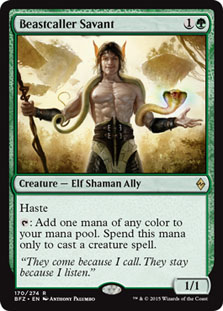
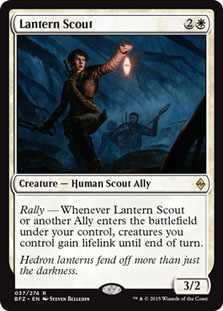
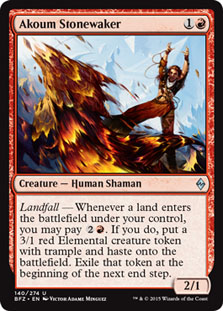
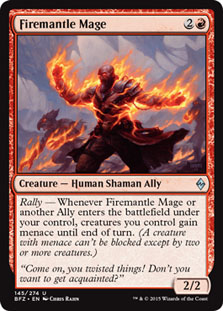
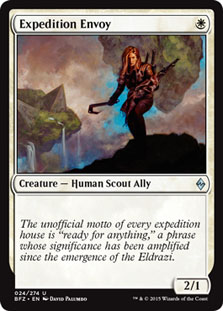
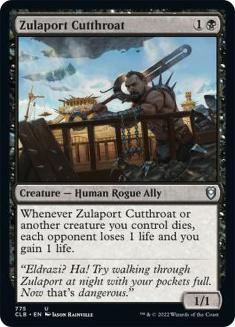
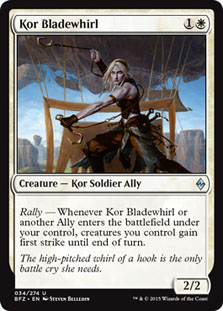
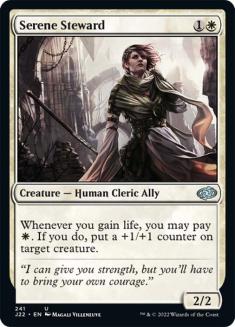
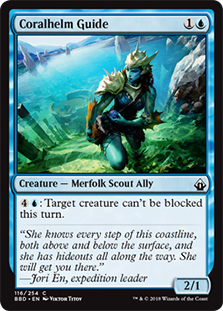
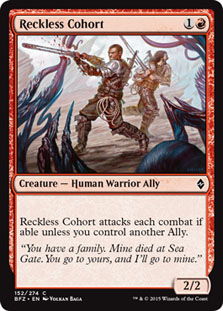
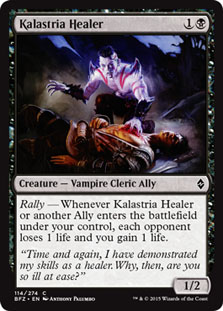
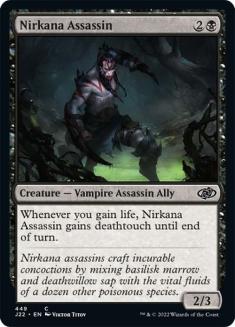
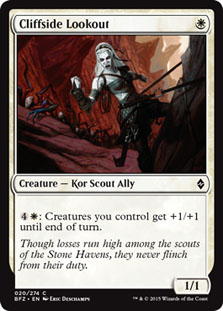
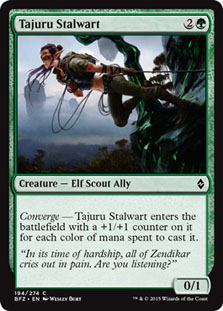
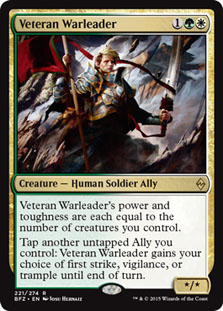
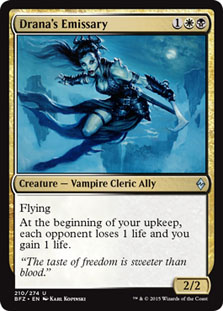

What we’re looking for are global effects for our Allies. While Lantern Scout and Firemantle Mage certainly have respectable abilities, I’m not terribly
interested in simply giving all our creatures first strike with Kor Bladewhirl. Veteran Warleader certainly has the stats to take a hard look at, but
otherwise, unless we’re interested in some Blood Artist-esque drain-out gameplan with Zulaport Cutthroat, there isn’t much else to look forward to adding
to our Modern Allies deck.
For that matter, what can we actually hope to cut? The majority of Allies present in stock lists are all creatures that get bigger whenever more Allies
enter the battlefield. The bar is, ironically, already quite high for this tribe.
I’ll pass, but keep a look out for more Allies in a couple months.
3. Though there are a lot of impressive cards, Gideon, Ally of Zendikar is the best card in Battle For Zendikar.
Ross Merriam – Fact: This is a bit of speculation, as I have only just started to explore Battle for Zendikar, but Gideon, Ally
of Zendikar is such an incredibly powerful and versatile card that I cannot imagine another card from the set being better. Gideon can shine in aggressive,
midrange, and control strategies with his ability to go wide, go big, or provide immediate value by creating an emblem. It quickly generates a larger board
advantage than any other card in the set that costs less than eight mana.
When the full spoiler was released, this was my pick for the best card in the set; nothing I have seen in my testing has changed that opinion. Get ready to
see this card a lot over the next year and a half.
Michael Majors – Fact: I’ve already bought four. After being pummeled by the new flavor of freedom today, my only question is why does his
Knight ability cost zero?
Despite Gideon being incredibly powerful, there are two major components that are worth talking about regarding him. The first is that he is actually
rather complex and difficult to play with.
All three of his abilities the turn he enters the battlefield can be relevant depending on the situation, and many games will be won or lost by his
controller having the courage to pull the trigger on his emblem and turn the Ally of Zendikar into an overpriced Glorious Anthem. Derogative adjective
aside, that Glorious Anthem is serious business these days. Tokens are going to be running rampant across Zendikar, especially with the advent of Eldrazi
Scion, and when your tokens are twice as big as your opponents, you’ll have a huge advantage. Languish is going to see a lot of play moving forward, and as
you probably know, Wingmate Roc is the best card in Khans of Tarkir that has got the Languish blues. Gideon will be the roc’s best friend by
giving it fodder to activate raid, and then turning the love birds into unstoppable 4/5s.
The fact that Gideon has four loyalty after creating a Knight is going to encourage an increase in play in cards like Sarkhan, the Dragonspeaker and
Demonic Pact. If the difference between Gideon dying is am additional attacker or activation of a planeswalker thanks to using his +1 immediately, that can
be a massive turning point in the game, allowing his controller to keep him alive and start to stabilize the board. Gideon is excellent at protecting
himself and snowballs quickly.
The second component is Gideon is much more powerful than he “would have been” due to context of this new format. It is incredibly difficult to kill
planeswalkers right now. Ruinous Path’s sorcery speed is a huge difference from Hero’s Downfall. Every time someone is able to land a planeswalker on a
stable board in this format, it’s going to mean a massive swing in tempo. Not only will Gideon not be immediately answered but his opponent will now have
to wait, untap, and waste their turn before killing the Ally of Zendikar. Not to mention he will get to leave a Knight in his wake.
You’re going to be playing against this card for a long time. Get used to it.
4. Of the new mechanics and keywords in Battle for Zendikar (Devoid, Ingest, Awaken, Rally, Converge, Landfall), Awaken is the best for Constructed.
Ross Merriam – Fact: I believe Awaken is the best mechanic in the set for Constructed because it asks the least of you from a deckbuilding
perspective. Devoid and ingest require you to have a high density of both mechanics and draw them in the right proportion to function properly, otherwise
the cards are severely underpowered.
Converge requires you to play at least four colors, if not five in order to take full advantage of the cards, which brings all the trouble of managing such
a complicated manabase. Rally, like Converge, pigeonholes you into a specific deck choice and in my opinion, the Allies in this set do not have the makings
of a viable deck since the overall curve of them is too high.
Landfall comes the closest to being better than Awaken, but I still find that it falls short. Both mechanics encourage you to play more lands while
providing value to excess lands, thereby insulating you from both flood and screw. However, landfall does so in a way that introduces a natural variance
where if you do not have your landfall cards early, they are less effective; and if you do not have the lands to fuel them, you may have a draw flush with
spells, but they will be less valuable on the balance than your opponent’s.
With Awaken, we have spells that are perfectly reasonable on their own that simply provide a natural bonus when you flood. You do not have to do anything
in particular to make them effective, nor do you have to draw them at a specific time. That kind of free value is excellent and something I am always
looking to take advantage of.
Michael Majors – Fiction: As things stand right now I’m not sure Awaken is even the second best new mechanic. First of all, I will never
play a card because it has Awaken, and the fact that it has Awaken will never, as far as I can currently predict, directly influence how my deck is built.
Awaken is a nice bonus, making cards that are important to the format like Ruinous Path and Planar Outburst a little bit stronger in niche situations. In
rare circumstances, the Awaken ability will come up and be incredibly powerful, but it is merely a small component of a great spell we are already
interested in playing.
Landfall, on the other hand, is a strong build-around-me mechanic that has roots in some awesome new cards. I’m very interested in exploring the new
retreat cycle, and am particularly high on Retreat to Emeria and Retreat to Kazandu. Both are great at prolonging the game and quickly closing it. Blighted
Woodland is another excellent component for powering up the two aforementioned enchantments and also just ramping its owner into bigger and better things.
I’d mentioned it previously, but the Blighted cycle all seem very powerful to me, and I like playing decks that are incentivized and naturally rewarded for
hitting all their land drops.
Converge is another exciting mechanic that encourages exploring vast design space. Bring to Light and Woodland Wanderer, in particular, are the big
standouts to me right now. While the Wanderer is simply a thin and smart beater, Bring to Light is capable of doing a lot of awesome things depending on
how deep you’re willing to go. I would hope by now you would know that I love to dive down into the depths, and you should expect to see some brews with
this card in the future.
5. Theros/Khans of Tarkir Standard is the best Standard format of all time.
Ross Merriam – Fiction: As in the first question, I think this format comes up second. Many of you probably were not around for it, but I
am still partial to Champions of Kamigawa/Ravnica Standard in which there was comparable diversity (Heartbeat Combo, the various W/B Aggro decks,
U/R Tron, Zoo/Gruul, Beach House, Solar Flare, Greater Gifts, Ghazi-Glare, Owling Mine, etc.) but without the omnipresence of any deck like we saw with
Abzan Control and Siege Rhino. You could argue that Umezawa’s Jitte was similarly unbalanced, and while I will not argue that it was of an appropriate
power level (let’s just say WotC was still working out how to develop equipment back then), it was not a huge issue outside of aggro mirrors.
Perhaps I am biased by nostalgia, but I will always remember that format with a particular fondness. I think it featured a slightly wider variety of
strategies and a larger spread of the total card pool.
Interestingly, I see the key feature to both formats as being how good the mana was. You might think that having good mana would restrict the card pool by
letting you play more of the most powerful cards in a single deck, but both formats featured a very balanced card pool, thus allowing more decks into the
metagame as none of them were priced out due to consistency issues from their mana. If the cards were good enough, which they often were, you could make
the mana work. I see the same quality in Battle for Zendikar Standard, so I am expecting another great year.
Michael Majors – Fiction: Don’t get me wrong, Theros/Khans of Tarkir Standard was a great format with interesting games and a
variety of viable decks. The thing that holds it back in my eyes is likely something that most will disagree with, but in retrospect, a lot of its
diversity was actually a falsehood. Theros/Khans of Tarkir Standard was repeatedly an exercise in how quickly it took for everyone to build the
best Rock deck. For the last several PTs, Abzan always did rather poorly in our testing. We were never sure how to build it or configure it correctly to
beat the expected metagame. Then, following the Pro Tour, like clockwork, Abzan was always “figured out” and went on to be the most dominant deck at every
other level, culminating in Seth Manfield’s win at Worlds.
Granted, Abzan took on various flavors over the course of the past year, but whether it was playing Sylvan Caryatid, End Hostilities, reanimating creatures
with Whip of Erebos, returning Deathmist Raptor from the graveyard, or putting a +1 +1 counter on Hangarback Walker, one truth remained constant: Abzan’s
opponents were always praying to dodge that dastardly third Siege Rhino to keep their dreams alive.
Great? Certainly.
The best? No, but I’m thankful that Magic is moving in a trajectory that it’s even in the discussion.
While I still fully expect to lose 8619 more life to Siege Rhinos over the course of the next year, I’m excited for the change of pace that Battle for Zendikar soon promises.

